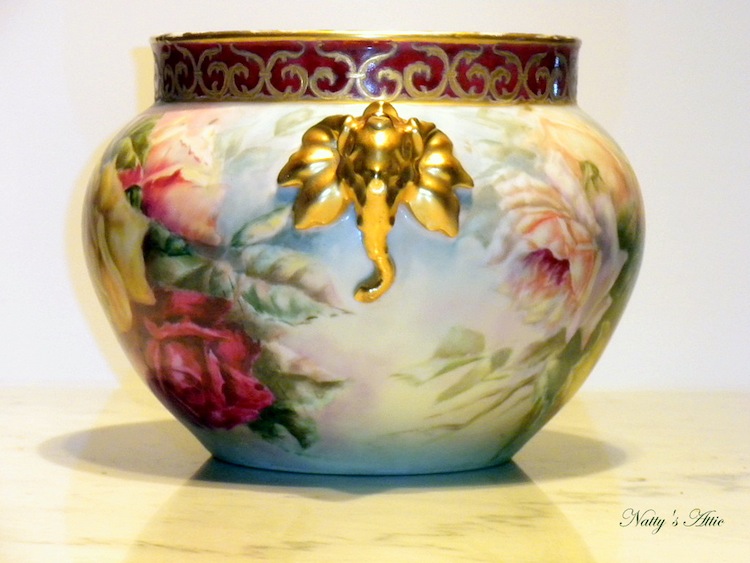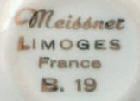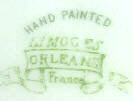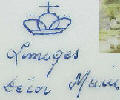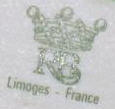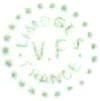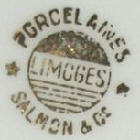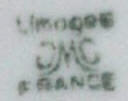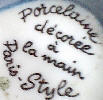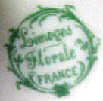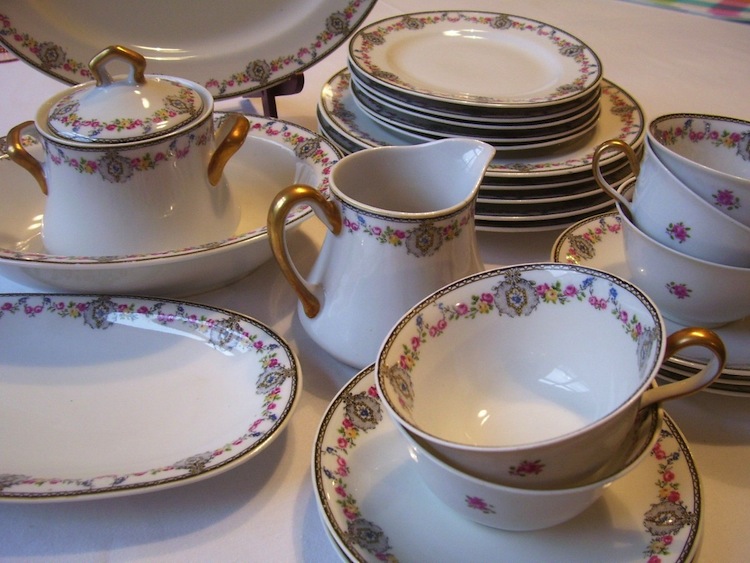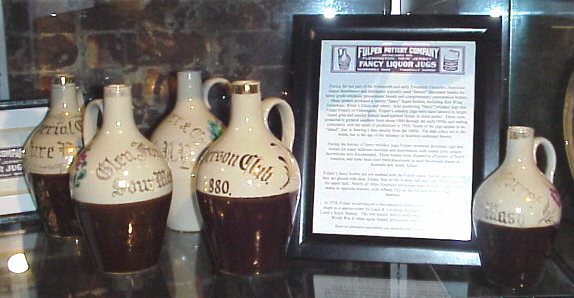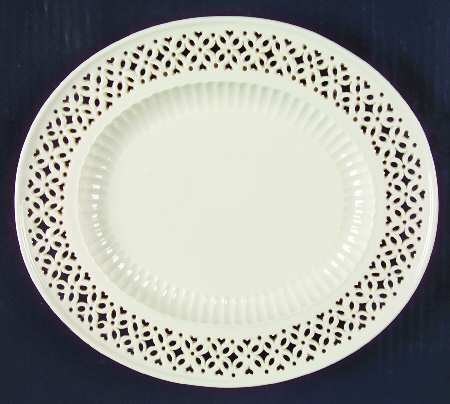Quality of Decoration
One of the most difficult areas to define is artistic value and quality of decoration. Because a piece is decorated in France does not mean it is well executed. Nor for that matter does a piece decorated by a professional US decorating studio mean it is well done. There are many pieces, for example, that were decorated in Limoges for the New York import firm, George Borgfeldt (bearing the Coronet mark) that are mediocre to bad; on the other hand, almost all of the pieces decorated by the Paris studio, Le Tallec, are exquisitely decorated. On balance, however, there are more poorly decorated pieces by amateur US painters than poorly decorated pieces done by professional artists and studios in France and the U.S.
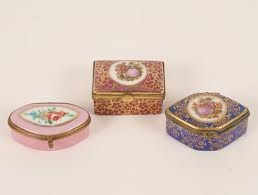 Look for in decorative objects that are pieces entirely hand-painted, since many of these pieces have variability and nuances of colour, shading and design that are not found in pieces that are decorated with transfers. Also pieces that have the Limoges trademark of heavily gilded borders and accents. In some cases, pieces are so heavily gilded that they diminish the subject being depicted. Pieces where the painting acknowledges in some way the specific details of the blank itself and where, for example, ridges and designs in the porcelain are incorporated into the painting and overall decoration.
Look for in decorative objects that are pieces entirely hand-painted, since many of these pieces have variability and nuances of colour, shading and design that are not found in pieces that are decorated with transfers. Also pieces that have the Limoges trademark of heavily gilded borders and accents. In some cases, pieces are so heavily gilded that they diminish the subject being depicted. Pieces where the painting acknowledges in some way the specific details of the blank itself and where, for example, ridges and designs in the porcelain are incorporated into the painting and overall decoration.
The U.S. decorating company, Pairpoint in Massachusetts, decorated Limoges porcelain in the 1880s, and their decorators were mindful of the shape and design of the porcelain in the decoration of their hand-painted pieces. Pairpoint pieces command high prices, and their Limoges porcelain bears the Pairpoint Limoges mark.
In dinnerware, particularly, transfers are indiscriminately placed over the various accents in the porcelain itself, so that there is no harmony between the blank and the decoration. The Paris decorating studio, Le Tallec (1930 to the present), on the other hand, is an example of all hand-painted pieces that are perfectly coordinated with the porcelain itself. Le Tallec decorated Limoges porcelain commands extremely high prices, with one four-piece place setting of dinnerware ranging from $2,000-$3,000 and even higher with some of the older pieces. The company is presently owned by Tiffany & Co, and pieces for Tiffany are marked, Tiffany & Co. Private Stock.
In painted pieces which include people, it is important that the individuals are attired in clothing of the period with features that are well proportioned and with facial expressions that convey a feeling or mood. It is also important that the background contributes to the portrait or figure in the painting. Antoine Soustre, a decorator c. 1880s, was one of Limoges’ best painters of people and is able to create a mood that is expressed not only by the individual but by the background as well. Many of the pieces painted and signed by A. Soustre carry the Théodore Haviland mark.
Unfortunately, there are many instances by other artists of figural decorations where the figures are mistakenly off centre on the blank or the figures are proportionately too small for the size of the blank. In other cases, the bodies of some figures or their arms or legs are misshapen.
In pieces involving more than one individual look for some interaction between the people, either in terms of their expression or activity. As with paintings of people, paintings of animals, birds and fish that are intended to be lifelike need to be well proportioned. When there are multiple birds set in a scene, for example, the painting should have depth, where birds and objects in the foreground look closer and are larger than those in the background. The setting is also important. Some settings are quite detailed, containing water, building, flowers and other objects. Many of the pieces for serving seafood are elaborately decorated and quite stunning, where the artist has used an abundance of bright colours with heavy use of gold accents, while maintaining a sense of the reality of the subject. In some of the paintings, the birds appear to be actually alive and ready to move off the porcelain at the slightest sense of danger; in others, the birds appear to be actually flying or moving. Movement and the sense of danger or heightened awareness are also depicted in paintings of other animals as well. Two of the best Limoges artists in painting these subjects are Dubois and A. Broussillon.
One of the other common decorating themes of Limoges porcelain is flowers. The majority of the dinnerware sets are decorated with floral transfers and gold highlights. Although most of the dinnerware patterns are floral transfers in subdued colours, sometimes with gold accents, others are brightly coloured with lavish use of gold borders and accents. Flowers are also the predominant themes on dresser sets. While decorative pieces have more varied subjects, floral designs also make up a large proportion of these items as well, especially pieces painted by American artists. With decorative pieces, the flowers are more often boldly painted in bright colours, with lavish use of gilt. The more striking paintings are those where the flowers appear fresh and lifelike. With jardinières, cachepots and vases, the floral themes should encompass the entire piece, and not just one angle or view. In some of the better executed pieces, the floral design may show some progression as it wraps around a vase or jardinière; where, for example, sprigs of flowers may be in different stages of opening or where a variety of colours are contrasted and fused. There are also some unusual paintings, particularly on plates, where floral patterns are used as foregrounds to frame background scenes, giving the piece a sense of depth and dimension Some painters, using pastels and soft colours have been able to give floral patterns a wispy effect, where the flowers and foliage are almost floating on the porcelain. The Limoges artist, A. Broussillon, has painted some beautiful floral pieces.
There are many other decorative themes included in Limoges porcelain. Popular subjects also include different fruits, with grapes being especially popular with American painters; cherubs; patterns reflecting Asian influences; art deco designs; and interesting abstract uses of shapes and colours.
It must be emphasized that there is a beauty of many pieces of Limoges porcelain that were never decorated, whether intentionally or not. The Pouyat Company, in the latter half of the 19th century, manufactured some of the most stunning white porcelain blanks, known for their whiteness and translucency. There are many figurines that were produced as undecorated porcelain blanks that are superb examples of the art deco period. Some of these pieces are not identified with a particular sculptor while others may be inscribed, such as pieces done by Joe Descomps. Also, the sculptor, L. Savine, who worked for the Théodore Haviland company, produced many exquisite figurines of women.
Purpose of Pieces
There are two major categories for the use or purpose of porcelain pieces, and these two categories to some extent overlap. These are decorative and/or functional. Some porcelain pieces are clearly decorative, such as chargers, plaques and hinged boxes and, to some extent, vases, jardinières and cachepots. Other pieces are clearly part of functional sets, dinnerware, dresser items and specialized sets for beverages, game and seafood.
While the decorative items are more likely to be lavishly decorated and entirely hand-painted, this is not always the case. On the other hand, dinnerware is more likely to be decorated with transfers, although there are many examples of dinnerware sets that incorporate both transfers and hand enamelling or are entirely hand-painted. Special purpose sets for the dressing table and for serving game and seafood are often hand-painted and lavishly decorated, and the individual pieces are often art objects by themselves.
In general, the value of decorative items or art objects are based upon the quality of decoration and the size, while the value of functional sets are determined by the completeness of the entire set. For example, a dinnerware set for eight is proportionately more valuable than a dinnerware set for six. Complete game and seafood sets, although quite rare, usually include 12 dinner plates, 1 platter, 1 gravy boat and saucer and, sometimes, two relish/sauce dishes. Not conforming to the general rule of completeness in determining value are oyster plates, which singly or in multiples of the same pattern, are highly sought after and command high prices.
Subject of Themes
The decorating themes and styles of Limoges porcelain have varied over time. The very earliest Limoges themes were gold work, flowers and people. Over the last 100 years, in order of most to least prevalent, are flowers, especially roses; fruit, including many grape and berry themes; game birds, fish and shellfish; human figures and portraits; and, finally, natural scenic themes and animals.
Although the popularity has changed over time, themes currently very popular with collectors are flowers, especially roses, and human figures and portraits. The animal rights movement has to some extent diminished the popularity of game animals and hunting scenes; however, many pieces with these themes are extremely well decorated.
Decorating Method and Style
Decorating method is also an important factor in determining value. In general, completely hand-painted pieces are more desirable than pieces that are decorated with transfers or pieces that are predominately transfers with hand-painted highlights. Most of the decorative art objects are entirely hand-painted, except for sculptured figurines. An artist’s signature also adds value, especially if the piece was decorated by one of the better Limoges artists, such as A. Soustre, Dubois, Ted Alfred Broussillon and Luc, to name a few. The majority of dinner- ware is decorated with transfers, since transfers are applied under the glaze and are therefore more durable. A large number of older dinnerware sets, though, are hand-painted with gold accents.
Hand-painted items are not necessarily more valuable. There are many entirely hand-painted items, even by well known artists and studios, that are poorly done whilst there are many beautiful pieces that are decorated solely with transfers.
Additionally, many undecorated pieces are more highly valued than pieces that are decorated. This occurs in many sculptured items that were never intended to be painted, in pieces where the porcelain itself is very white and highly translucent, where the shape of the porcelain blank itself is a work of art, and finally where white blanks are scarce. Some of the most beautiful pieces of Limoges porcelain are white blanks that have only been glazed or left in bisque (no glaze).
Especially beginning with the 20th century, the typical style which many collectors associate with Limoges are pieces which are hand-painted in deep and vivid colours with heavily gilded accents. The decorative pieces, which are particularly highly sought after, are those with thick gold borders on chargers and plaques and gold painted handles, rims and bases on vases, cachepots, punch bowls or jardinières. This style was widely copied by amateur U.S. painters; and while many of these pieces do not represent fine art, they are nevertheless very popular with collectors.
Decorating Origin
A lot of attention has been paid to the decorating origin of Limoges porcelain. Some Limoges companies were only decorating studios; others only manufacturers; still others only exporters while some were all three. Often, however, a company started out in just one of the above three areas and then later expanded to include additional functions in either the manufacturing or decorating process.
Much of the very early Limoges porcelain was not marked, either to identify the manufacturer or the decorating studio. Thus, many of these pieces are mistakenly called Old Paris and, in fact, it is very difficult to distinguish between Old Paris and much of the early unmarked Limoges porcelain. Even when the manufactures began to routinely mark their porcelain, beginning in 1891 when the McKinley Tariff Law in the U.S. required imports to indicate the country of origin, the decorating company was not always indicated with an overglaze mark. There are many pieces of early Limoges porcelain that were clearly professionally decorated in France, yet have no decorating mark. The experienced collector can usually determine just by looking at a piece whether it was professionally decorated in Limoges, regardless of whether there is a decorating mark. Also, a large number of Limoges blanks were decorated in the U.S. by professional decorating studios, such as Pickard and Stouffer (these are usually marked), and by individual professional artists as well as amateurs.
Age
The first piece of hard-paste Limoges porcelain dates from 1771. Since much of the Limoges porcelain during the first 75 years, especially from 1880-1850, is unmarked and since most of these pieces are in museums and private collections, most collectors will only find pieces from around 1855 to the present. For those collectors who are interested in the history of Limoges porcelain, age is an important factor in determining value. For others, the quality of decoration plays a more predominate role.
With increasing age, porcelain tends to get chipped and cracked and the paint, especially if it is over the glaze, begins to show wear all of which tend to decrease somewhat the value of the piece. Most collectors are willing to tolerate some deterioration from wear, such as fading and some disappearance of paint, especially the gold decoration; but most collectors do not want pieces that are chipped and cracked. Only for very old pieces, which of course are quite rare, will collectors pay premium prices for porcelain that is physically damaged. After all, there are many old pieces that have suffered damage that are presently in museums.
Scarcity and Condition
Relative scarcity of particular pieces is also a factor in determining values, especially for the more advanced collector. This is especially true for blanks that have unusual shapes and that were produced in relatively small numbers.
Many of the larger pieces of Limoges porcelain fall into this category as well. Relatively scarce blanks include, for example, jardinières, vases with unusual shapes and handles, large chargers and cachepots, glove boxes from dresser sets, large oval plaques with intricately shaped borders, letter boxes, chamber pots with water pitchers and basins. Additionally, there are several Limoges companies that produced a relatively small amount of porcelain or decorated relatively few pieces, and companies that did not have a large export business to the U.S. Pieces from all of these companies tend to command higher prices because few of their works are in circulation. Examples of companies falling into these categories include S. Maas, Oscar Gutherz, François Alluaud, Henri Ardant and Barny & Rigoni.
There are a number of factors affecting the value and desirability of any piece of Limoges porcelain. Different collectors, depending upon their objectives and tastes, will place different values on each of these factors. The general popularity of particular themes also changes over time. Porcelain pieces that are well decorated will hold and increase their value over time. There is no substitute for the quality of decoration. Collectors who have eclectic tastes and a broad appreciation of beauty will find many superb pieces of Limoges porcelain and will not have to be concerned with what is popular at the moment. Also, there are still many fine examples of Limoges porcelain that are still available for collectors who concentrate on pieces from the 19th century.
Limoges Marks, but Makers Unknown
Authentic French Limoges porcelain since late 19th Century may have a variety of marks:
MAKER: The mark of the factory in Limoges that casts and fires the porcelain to make the white porcelain blank or whiteware is under the glaze or impressed into the porcelain. The makers mark is often just Limoges France in various scripts and colors. Since c1891, US law has required the country of origin to be marked on imported goods, but authentic pieces not intended for export often lack the France mark.
DECORATOR: A decorator’s mark will be over the glaze and subject to wear. When the maker also decorates the piece, they may add a second decorator mark, or it may have one mark for pieces it intends to decorate and a different mark for pieces to be sold as undecorated blanks or whiteware. Decorating companies often have a stamped or printed mark, but some hand write marks. Individual artists and small studios normally hand write marks. Porcelain painting was a very popular hobby around 1900, and a lot of porcelain was decorated and signed by hobbyists. The decorating mark commonly includes an indication of how it was decorated: Peint main for hand painted, Rehaussee main for hand highlighting of decal decoration, decor main meaning something was done by hand. Some older porcelain marked peint main or hand painted is actually just highlighted – always judge the work, not just the mark.
IMPORTER: The larger importers usually are involved in design and decoration and brand their Limoges boxes. Some importer marks are Sinclair Limoges, Rochard, Chamart, La Gloriette, Rose Decor, and many more.
RETAILER: Some pieces also have the name of the retailer, such as Nieman Marcus or Tiffany, who was probably also the importer.

